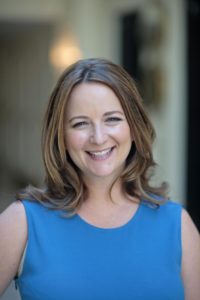 Golden Seeds is focused on investing in the vibrant opportunities of women-led companies. As such, we work with many talented, passionate female entrepreneurs who are doing truly remarkable things. Our “How Did She Do It?” series shares the stories, challenges and successes of the women behind the companies of Golden SeedsAN:
Golden Seeds is focused on investing in the vibrant opportunities of women-led companies. As such, we work with many talented, passionate female entrepreneurs who are doing truly remarkable things. Our “How Did She Do It?” series shares the stories, challenges and successes of the women behind the companies of Golden SeedsAN:
Today, Sheri Anderson, board member of Little Passports, interviews Amy Norman (left), co-founder and co-CEO of Little Passports.
Below, they discuss how Norman and her co-founder, Stella Ma, launched Little Passports. The company’s mission is to help raise a generation of citizens who are compassionate about cultures and people around the world. In monthly packages, Little Passports delivers the world to children ages three to 12, through fun activities and online games.
SA: Tell us about the origins of your company.
AN: My background is in business, finance and strategy. I spent my career before Little Passports working for companies like McKinsey and KPMG. I met my co-founder, Stella, while we were both working at eBay. We knew from the beginning that we wanted to build a mission-driven company with a big vision. Growing up, we were both exposed to different cultures, whether it was moving between the U.S. and England, or growing up in a Chinese-American household in a diverse community. We have built Little Passports with the mission of raising a generation of globally conscious kids. It’s been almost nine years now, and we’re most proud of being able to spark curiosity about other cultures in the minds of millions of kids.
SA: What market need are you solving, and how is your approach different from how others have addressed this need?
AN: It’s more important than ever to teach kids about global citizenship and to build bridges early between cultures. And yet, geography is often very low on the list of priorities in schools. Our product is an engaging, creative, exciting way for parents to provide this type of education for their kids starting at an early age.
Although there are competitors offering similar products focused on STEM education, no one is really tackling global citizenship the way we are. I believe this trend will change over the next few years, as people start to recognize the need and the impact of a global focus. I’m excited to be ahead of the curve, and so proud of the products the team is creating.
SA: What challenges have you encountered along the way? How have you overcome them?
NA: In the early days, our challenges were around raising capital. It takes money to build a brand, develop a product and hire great people. I think I thought that would go quickly, but many VCs we talked to weren’t excited about funding a company like ours because they couldn’t see how this could be the next $100 million brand. It took several years to get to a place where we could find the right marketing channel, one with a low cost of entry and a high ROI. Eventually, Facebook fit that bill, and we were able to boost our business through that channel. It was so thrilling when it finally took off.
SA: What’s coming up next for your company?
NA: We are approaching 10 years! Sometimes it seems like we just started out yesterday — until we look around and see how far we’ve come.
SA: What advice do you have for early-stage founders?
NA: Don’t think it’s going to be an overnight success. I think there’s this great myth that anyone with a good idea can immediately hit the stratosphere, but getting a company off the ground takes a lot longer than you think it will. You have to believe and persevere, even when it’s a long slog. My biggest advice for new founders is to make sure you have enough financial reserves to support yourself. You need at least a year of savings, if you can swing it.
SA: Tell us about your experience with Golden Seeds.
NA: Golden Seeds believed in us from the very beginning. They saw a need. They got it. They knew that moms and grandmas would want to buy this thing for the kids in their lives. They’ve been supportive every step of the way, great thought partners. Most importantly, they believed in us when traditional firms could not see the vision, and we’ll be forever grateful for that.
For more wisdom like this from other amazing female leaders, follow Golden Seeds on Twitter.



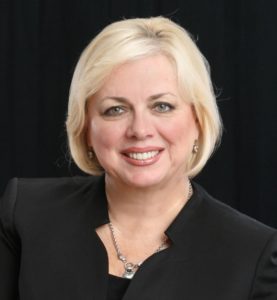 Golden Seeds is focused on investing in the vibrant opportunities of women-led companies. As such, we work with many talented, passionate female entrepreneurs who are doing truly remarkable things. Our “How Did She Do It?” series shares the stories, challenges and successes of the women behind the companies of Golden Seeds.
Golden Seeds is focused on investing in the vibrant opportunities of women-led companies. As such, we work with many talented, passionate female entrepreneurs who are doing truly remarkable things. Our “How Did She Do It?” series shares the stories, challenges and successes of the women behind the companies of Golden Seeds.
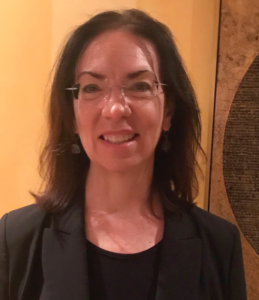
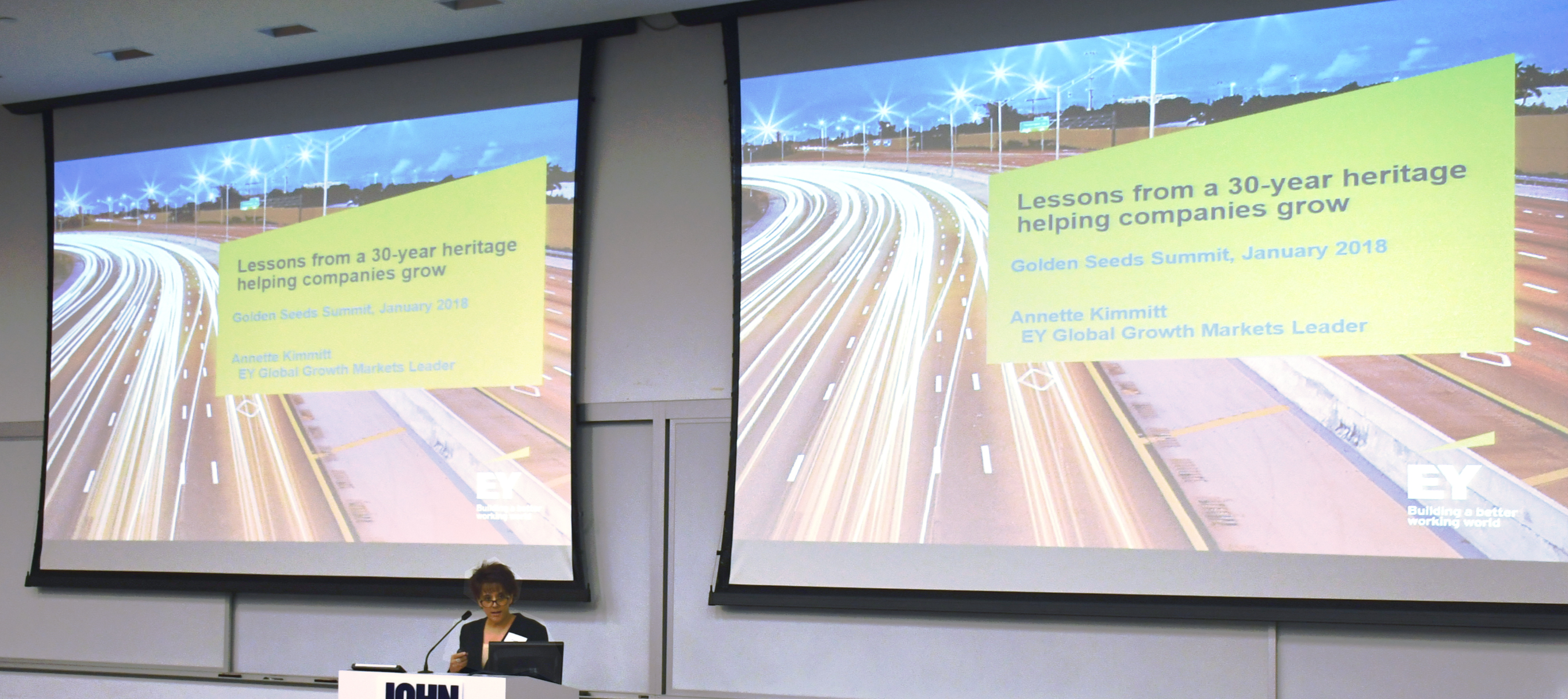 The keynote at the 10th annual Golden Seeds Summit last month in New York
The keynote at the 10th annual Golden Seeds Summit last month in New York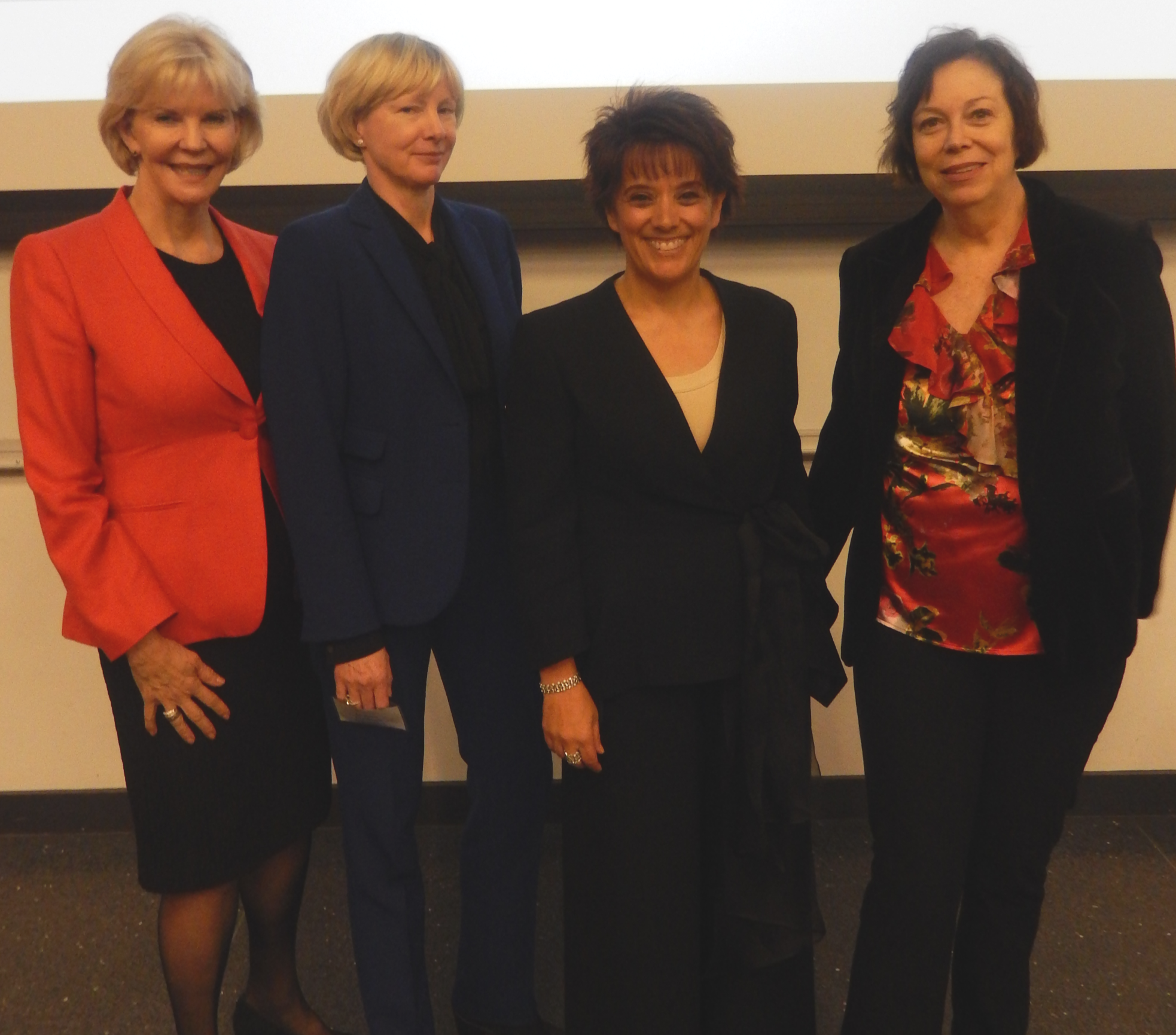 Annette Kimmitt (second from right) with Golden Seeds managing partners (from left) Loretta McCarthy, Jo Ann Corkran and Peggy Wallace.
Annette Kimmitt (second from right) with Golden Seeds managing partners (from left) Loretta McCarthy, Jo Ann Corkran and Peggy Wallace.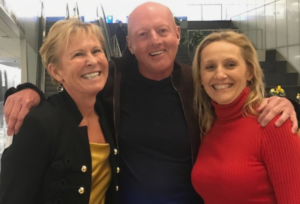 Members of Golden Seeds’ (from left) from Atlanta, Susan and David Nethero, and from Dallas, Deborah Michel
Members of Golden Seeds’ (from left) from Atlanta, Susan and David Nethero, and from Dallas, Deborah Michel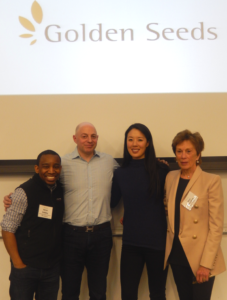 Our “Early-stage Investing” panel speakers (from left) Aaron Holiday of 645 Ventures, Ed Zimmerman of Lowenstein Sandler, Lisa Wu of Norwest Venture partners and Mary McCaffrey of Golden Seeds.
Our “Early-stage Investing” panel speakers (from left) Aaron Holiday of 645 Ventures, Ed Zimmerman of Lowenstein Sandler, Lisa Wu of Norwest Venture partners and Mary McCaffrey of Golden Seeds.


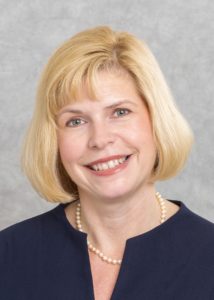


 Golden Seeds is focused on investing in the vibrant opportunities of women-led companies. As such, we work with many talented, passionate women entrepreneurs who are doing truly remarkable things. Our “How did she do it?” series shares the stories, challenges and successes of the women behind the companies of Golden Seeds.
Golden Seeds is focused on investing in the vibrant opportunities of women-led companies. As such, we work with many talented, passionate women entrepreneurs who are doing truly remarkable things. Our “How did she do it?” series shares the stories, challenges and successes of the women behind the companies of Golden Seeds.
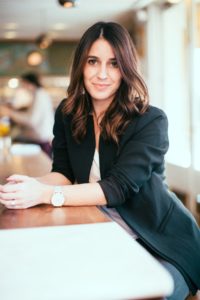 Golden Seeds is focused on investing in the vibrant opportunities of women-led companies. As such, we work with many talented, passionate women entrepreneurs who are doing truly remarkable things. Our “How did she do it?” series shares the stories, challenges and successes of the women behind the companies of Golden Seeds.
Golden Seeds is focused on investing in the vibrant opportunities of women-led companies. As such, we work with many talented, passionate women entrepreneurs who are doing truly remarkable things. Our “How did she do it?” series shares the stories, challenges and successes of the women behind the companies of Golden Seeds.